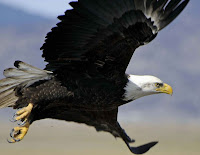The Finger Lakes Museum has announced the appointment of Richard Lane as Development Director. Richard brings over 20 years of senior level experience in the non-profit sector to the Museum, which will open its Discovery Campus, in Branchport in 2013 and plans to open its exhibit-based museum facility and aquarium in 2014-2015 at Keuka State Park.
While serving four nationally-recognized organizations, Richard has worked on capital campaigns, including construction projects, ranging from $12 million to $18 million. He has extensive experience in community outreach and advocacy, working diligently with non-profit boards to accomplish those projects.
Executive Director Don Naetzker stated, “We are very pleased and excited to have Richard on our team. We are impressed with his capabilities and look forward to working with him.”
Upon accepting the offer, Lane said “Having vacationed on the Finger Lakes since 2001 at my in-laws, and having been married at Norton Chapel, Keuka College, I have grown to love this very special region with all it has to offer. I am especially attracted to the Museum’s focus on protecting and sustaining the natural beauty and resources of the Finger Lakes, while promoting a green economy. I am truly excited about working with Board and staff to realize the Finger Lakes Museum, which will greatly benefit the region.”
Contact Richard by email at [email protected] or by phone at 315-418-0536 to set up a time to meet with him to discuss giving opportunities, questions about future donations, or to get to know one another over a cup of coffee.
In April, The Finger Lakes Museum launched its annual campaign titled “Preserving your Passions”. By the end of December, the Museum hopes to raise $450,000. Contributions are being accepted to help the Museum make their first annual giving campaign a success so they can continue supplying the Finger Lakes community and its visitors with educational programming focused on the preservation and stewardship of this beautiful Finger Lakes region. Donations can be made online or by mail to: The Finger Lakes Museum, PO Box 96, Keuka Park, NY, 14478.
The Finger Lakes Museum is proposed as the premier natural and cultural resource dedicated to the enjoyment, education and stewardship of the Finger Lakes Region – and to fresh water conservation. The Museum is chartered by the NYS Education Department and incorporated as a not-for-profit, tax-exempt organization.
For more information or to make contact, visit www.fingerlakesmuseum.org





 The Adirondack Museum third 2012 Cabin Fever Sunday series, “Nature: From Howling Wilderness to Vacation Destination” will be held on Sunday, February 12, 2012. The event will be offered free of charge.
The Adirondack Museum third 2012 Cabin Fever Sunday series, “Nature: From Howling Wilderness to Vacation Destination” will be held on Sunday, February 12, 2012. The event will be offered free of charge.


